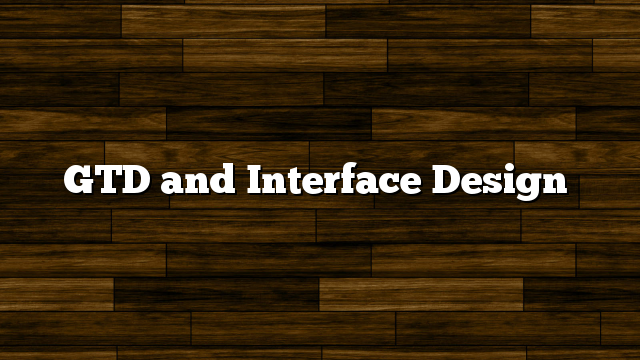When I first sat down to think about the interface for Liquid Minded, I wrote in my Moleskine, “The interface needs to embrace and reflect GTD.”
That was a few short months ago. Little did I know at the time that this seemingly simple vision would become the rule by which every design decision for this product (and others) would be made. There is a whole lot that the discipline of interface design could learn from GTD. After all, a successful interface is one that gets out of your way and lets you get things done. A successful interface is one that balances the power an advanced user wants with the ease of use a casual user needs. In many ways similar to how GTD adapts to each person’s way of thinking and working.
“The interface needs to embrace and reflect GTD.” A pretty solid vision for the UI of a productivity tool, don’tcha think?
It’s a vision that is by no means easy to follow. Especially when you’re talking about designing an application that’s as complex as Liquid Minded. And it’s not just “nice to have,” it’s essential to the success of the product. The whole idea of Liquid Minded is to become that trusted system that lets you focus on being productive. Order must be imposed, distraction must be reduced and anything that could possibly be a barrier to you getting something done needs to be dealt with.
At the same time it’s an application that’s got to serve a broad audience; from the GTD Ninja to the casual to-do list lover. In true keeping with David Allen’s principles it’s got to adapt to the process and work style of each individual that uses it. Simplicity, power, flexibility…these are things that, in many ways, are at odds with each other. To offer power and flexibility you’ve got to increase complexity at several levels. Our goal is to hide, or abstract, as much of that as we can from the interface. In essence we want something very powerful, very flexible and very complex to appear simple and elegant.
With each design decision, with each proposed interaction, feature or workflow these qualities need to be weighed against each other, the goal being to find the perfect balance between them.
It sounds like a lot of work, and could come off as somewhat of a special need to a GTD-focused product. I’d assert that, despite the particular needs of Liquid Minded, it’s not much different than the goals should be for any interface, for any interactive product. Each interface has it’s own particular needs and goals, but there are some common truisms. An elegant interface is one that is powerful, flexible and simple. An elegant interface lets you focus, reduces distraction and leads you toward accomplishing your goals. An elegant interface is trusted, and stable — it won’t let you down.
All of these qualities could be said about GTD. Which brings us back to the vision for Liquid Minded — to embrace and reflect the qualities of GTD as much as possible. It’s my great hope that we’ll achieve that balance and that we’ll provide you a tool that’ll provide you the power and flexibility you need to GTD in as simple a manner as possible.
Along the way we’ll be looking to you, the people who’ll (hopefully) be looking to Liquid Minded to help you get things done, to help us validate, fix and improve upon the decisions we make. Keep your eyes (or your feed-reader’s) here, we’re hoping to get you something to look at soon.
Keith is a Principle and Creative Director for Blue Flavor and one of the many talented folks working on Liquid Minded.


Presumably “Internet (anywhere)” includes on your phone, but if it doesn’t then on your phone would be nice too.
Chuck,
Mobile support is a big component of Liquid Minded. Blue Flavor is handling the design, and one of their founders (Brian Fling) is a mobule guru. We have good things in store for you.
Jeff,
Good to know. I’m hoping to move out of the computer-centric world and into the espresso machine-centric world in the next several months. I’ll still have my trusty phone, but I’ll be avoiding the laptop as much as possible.